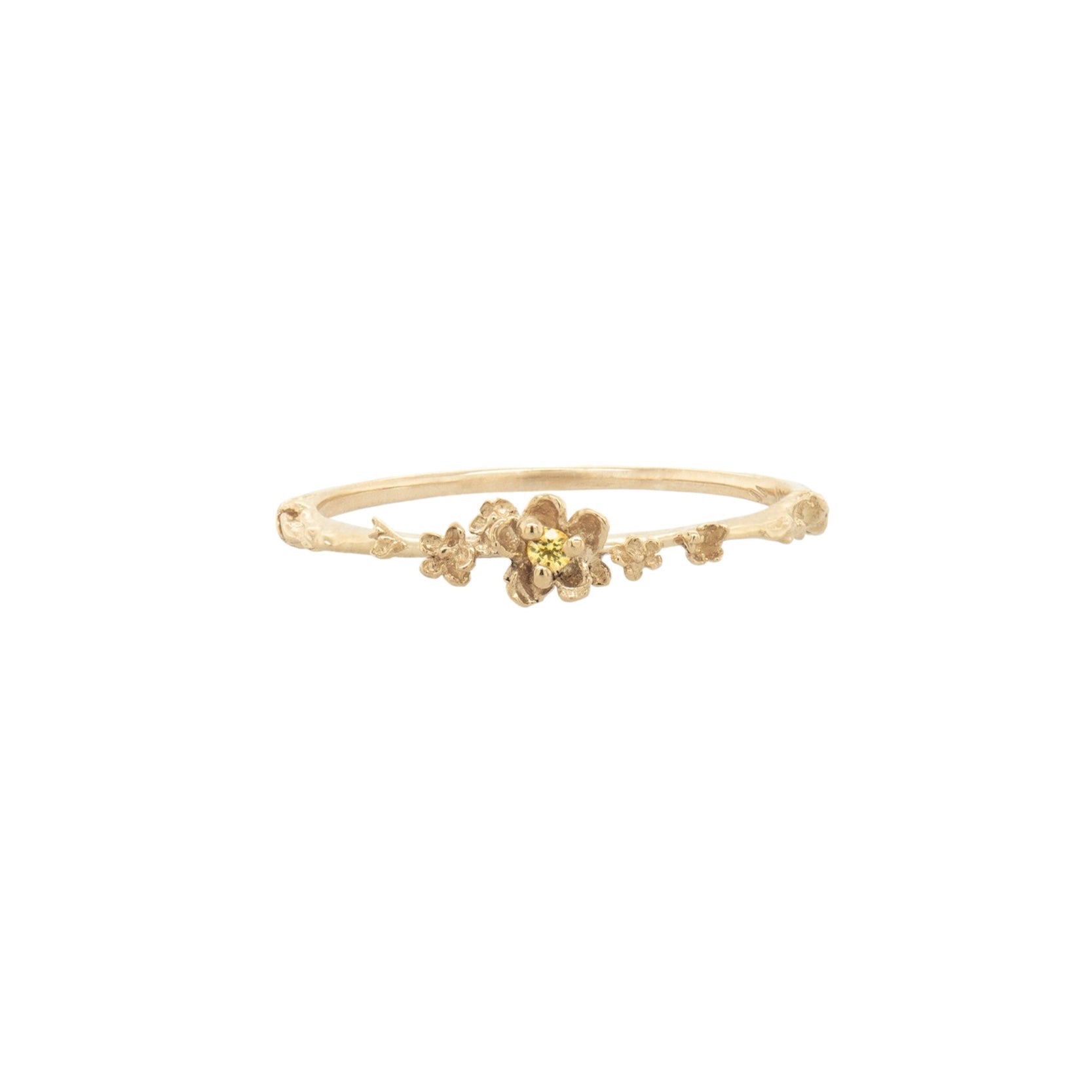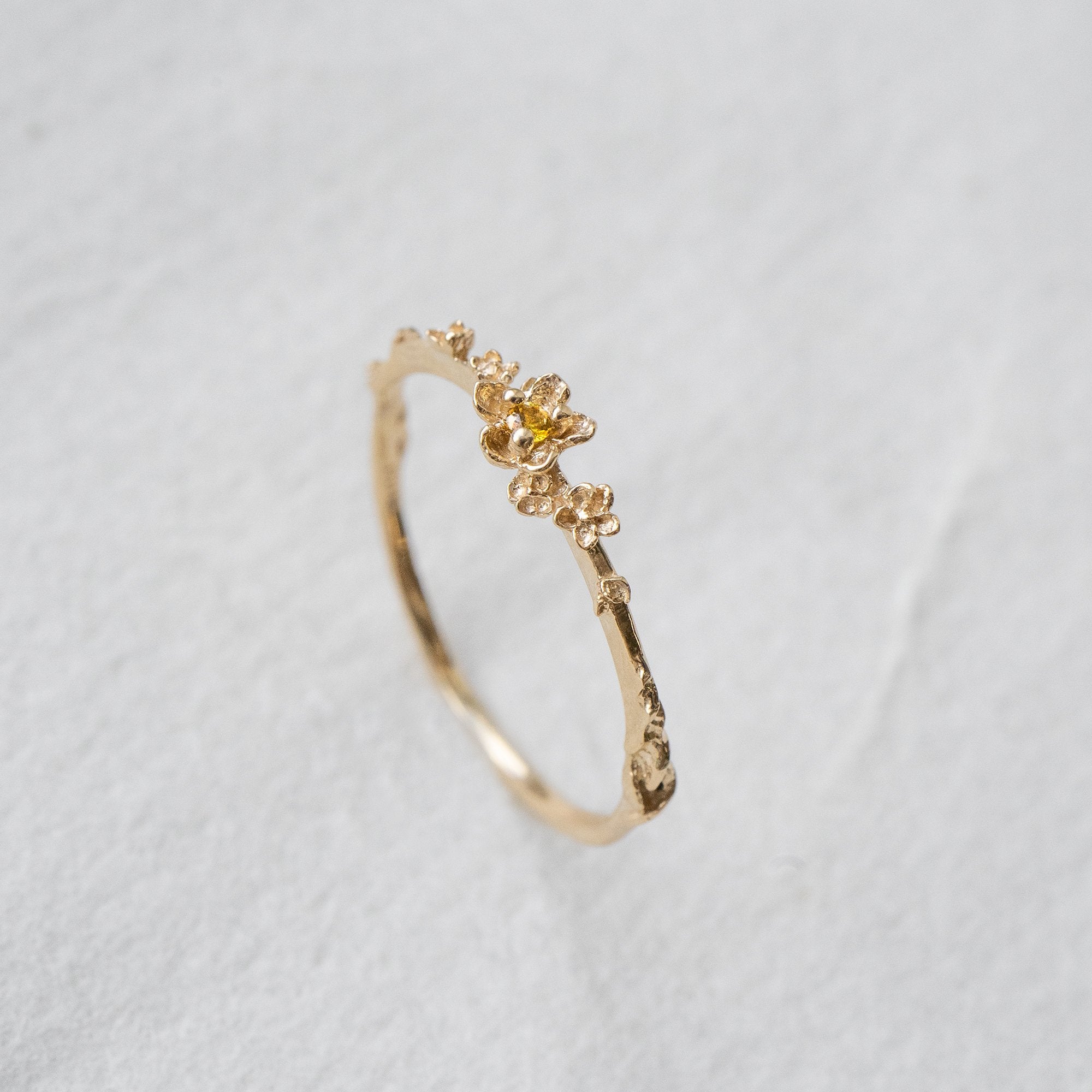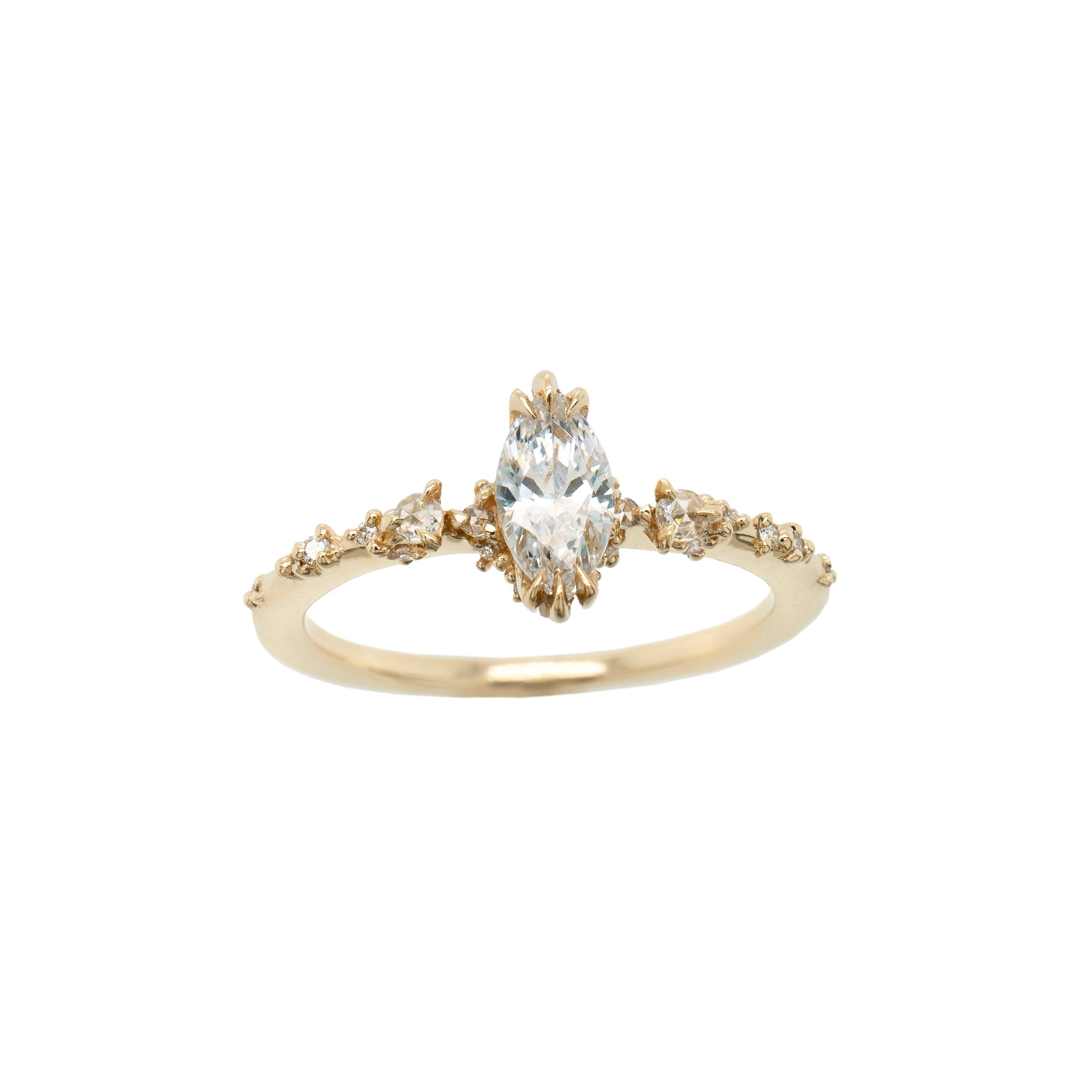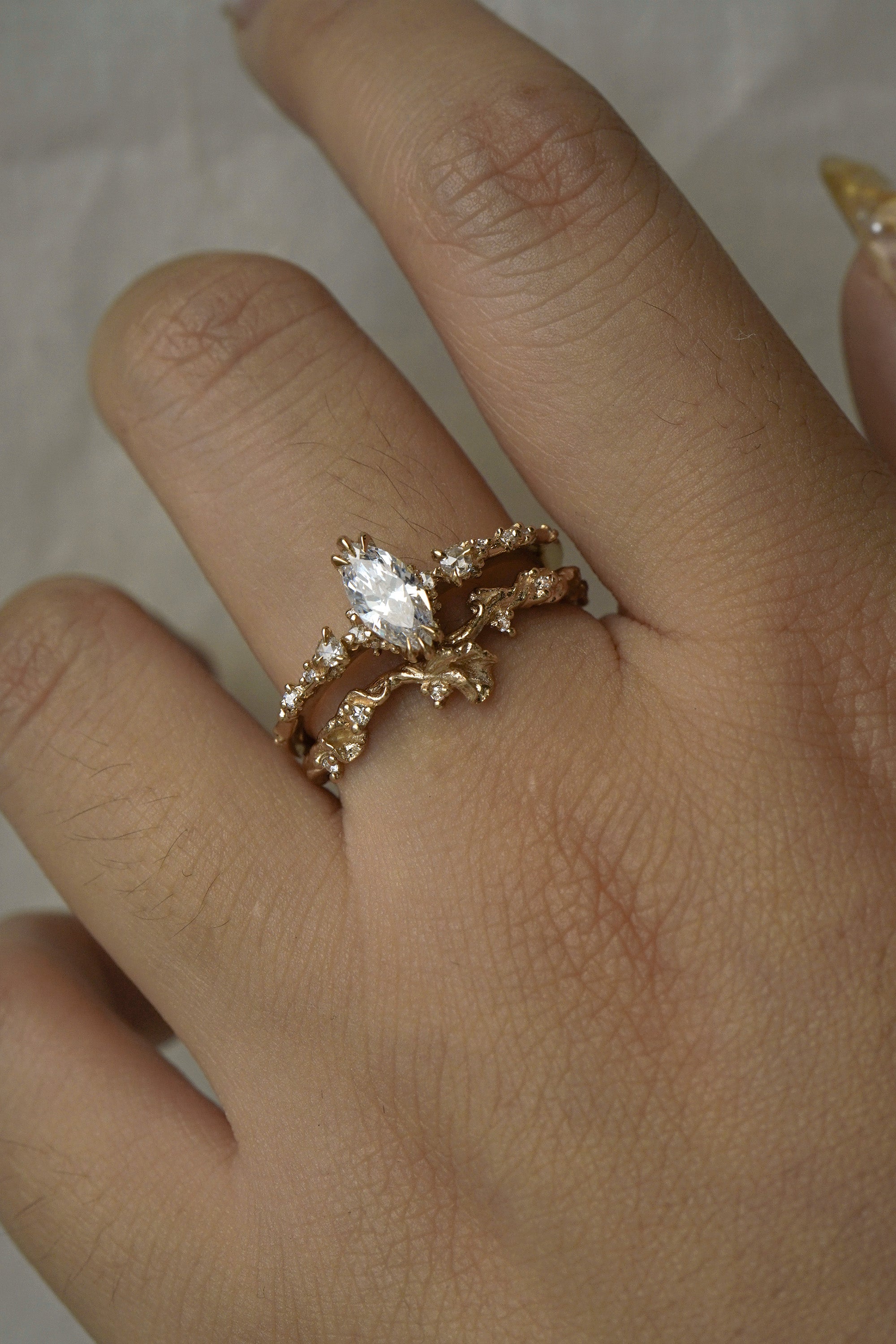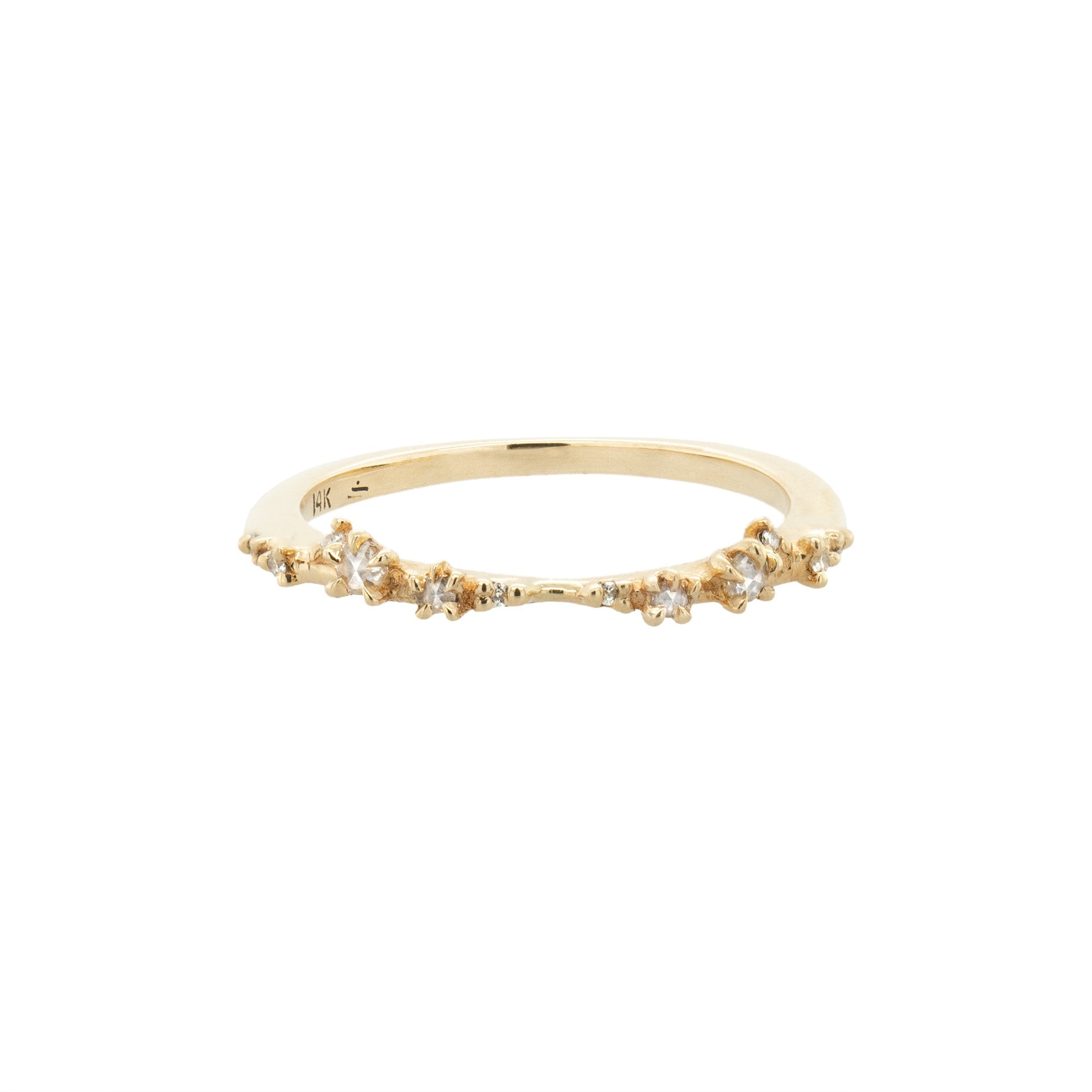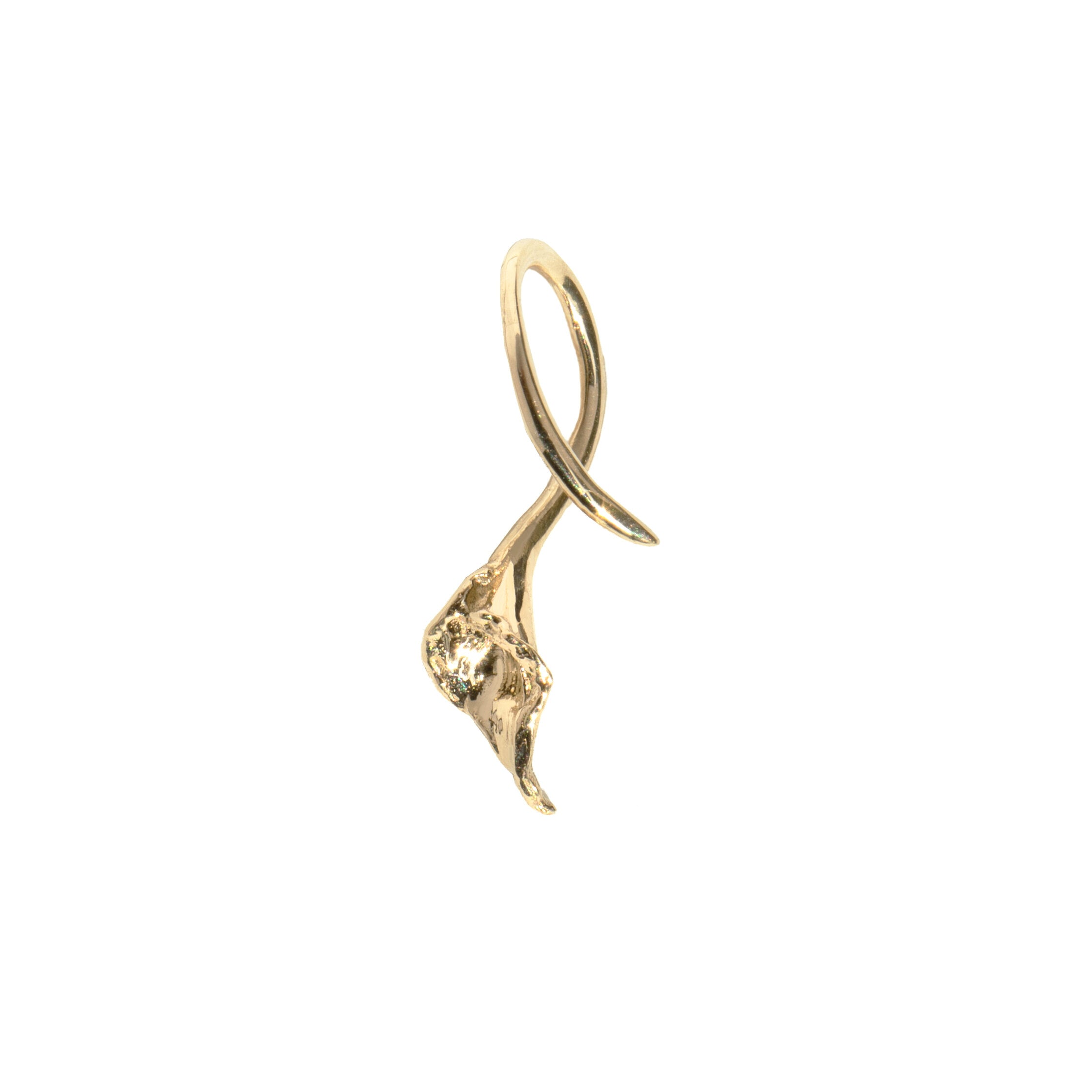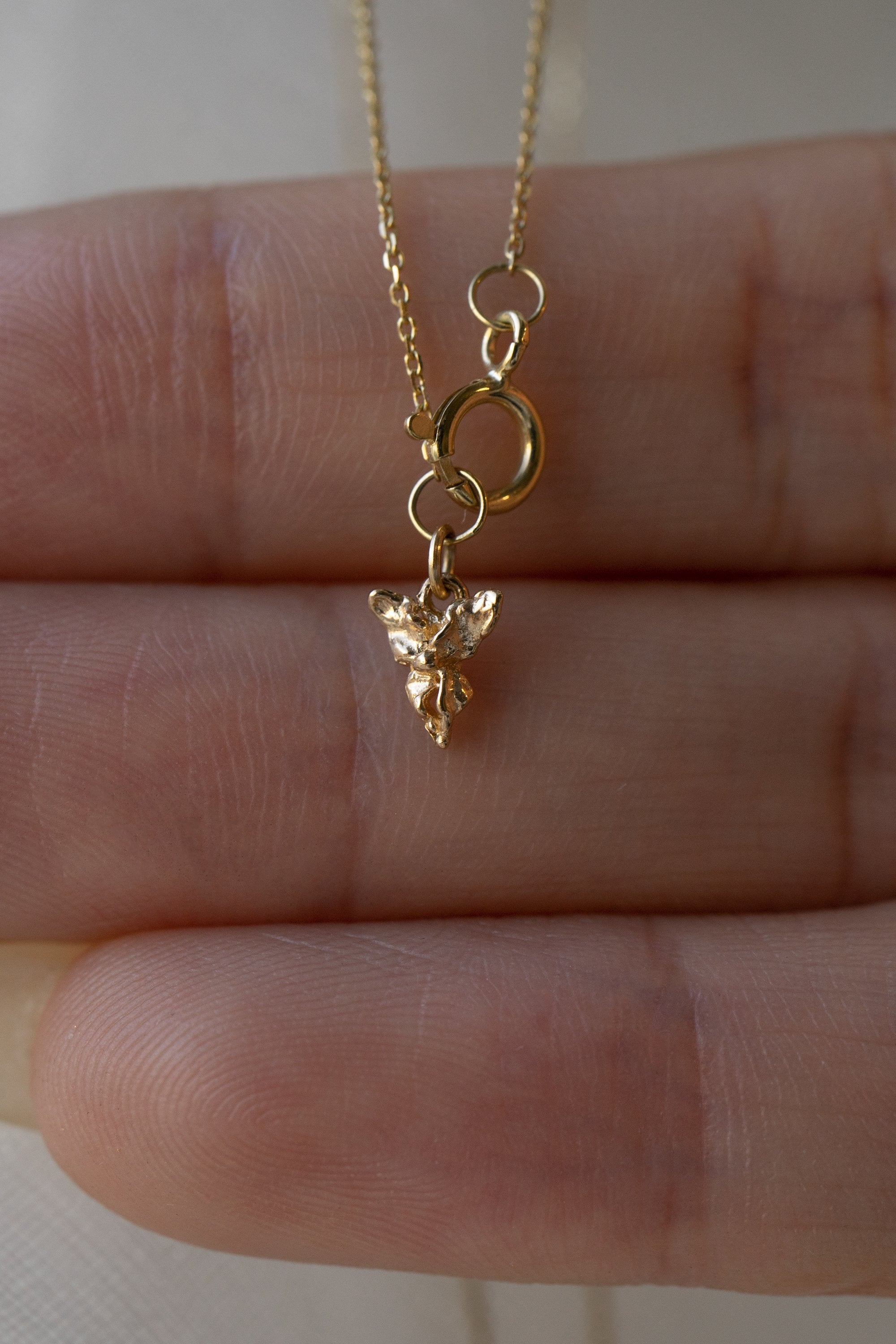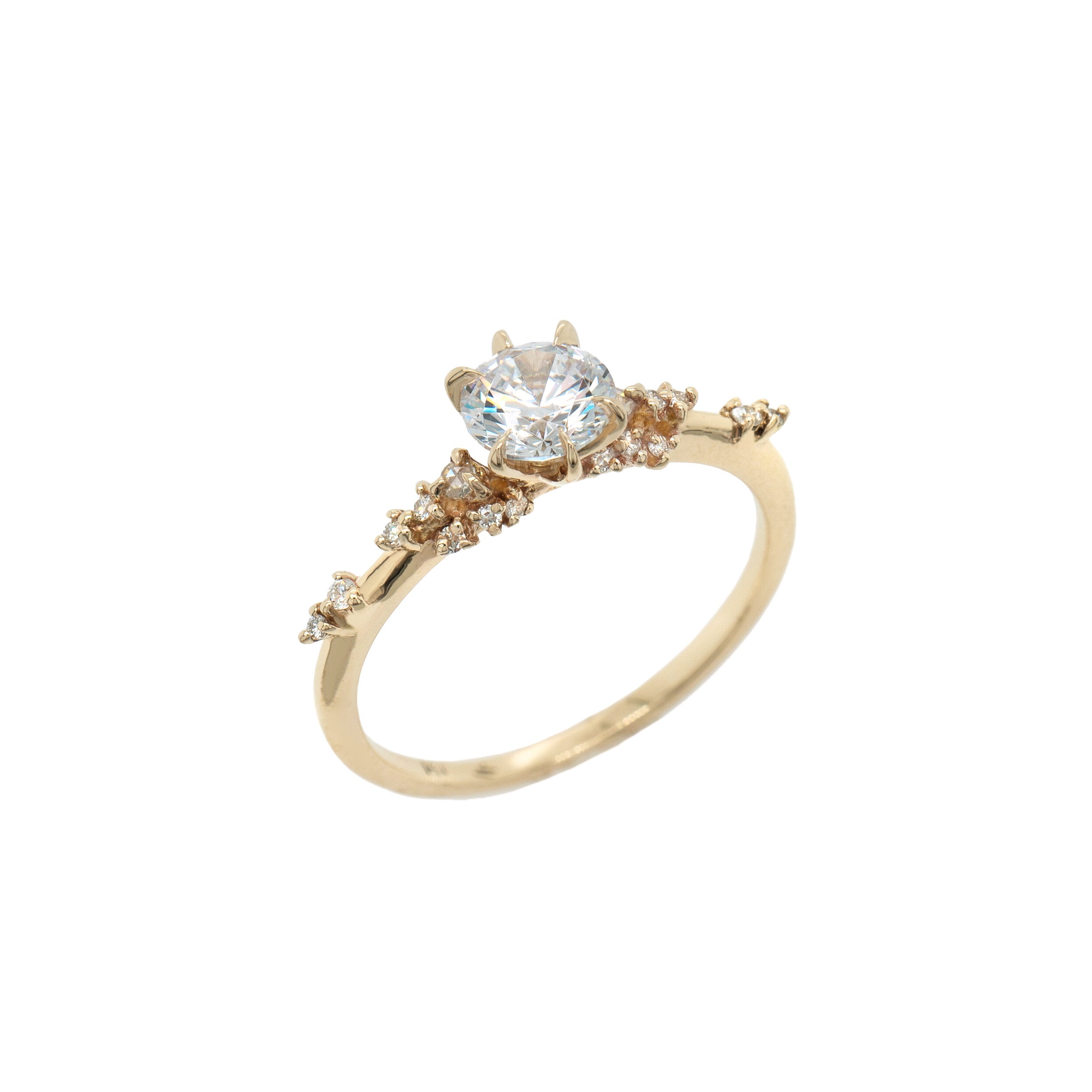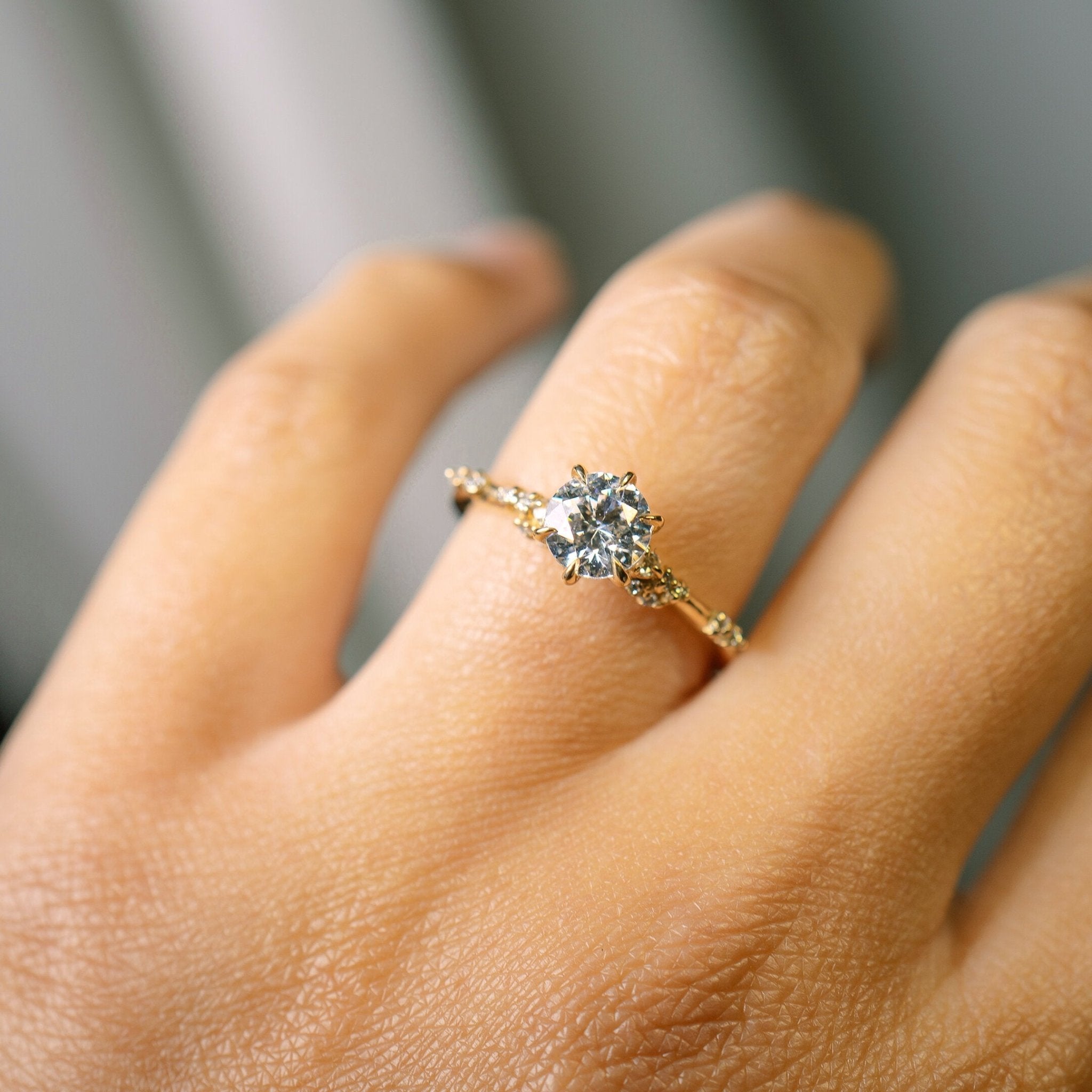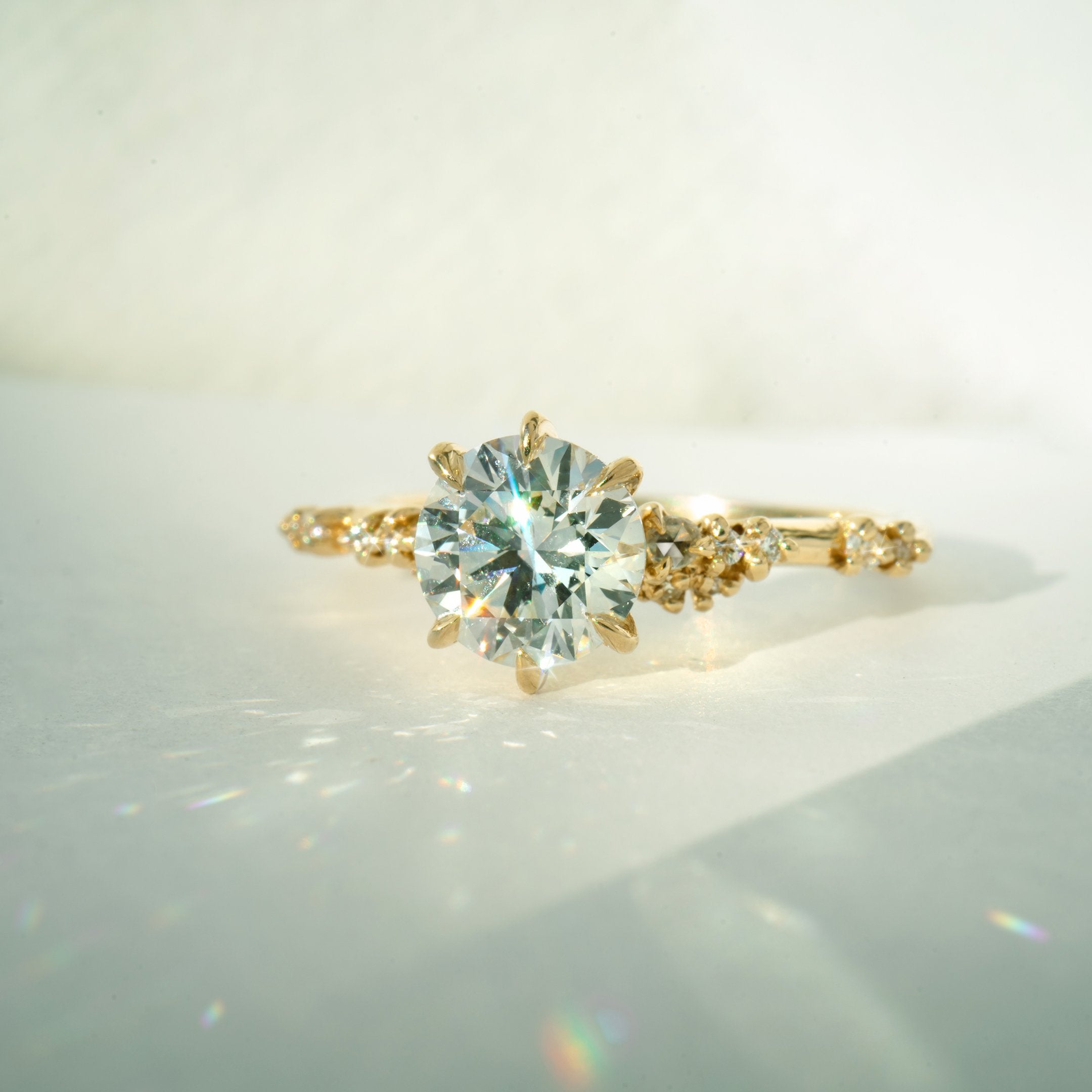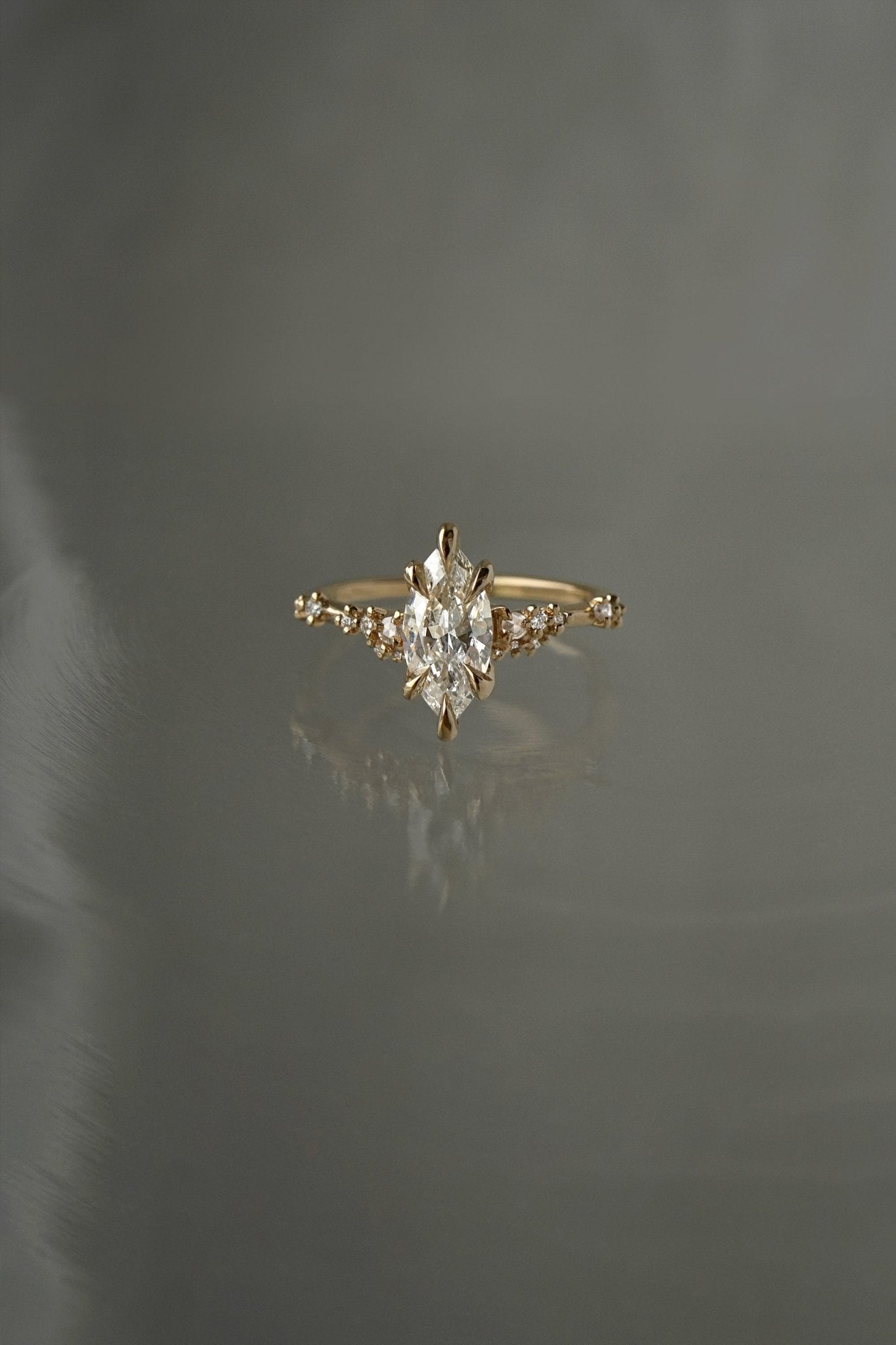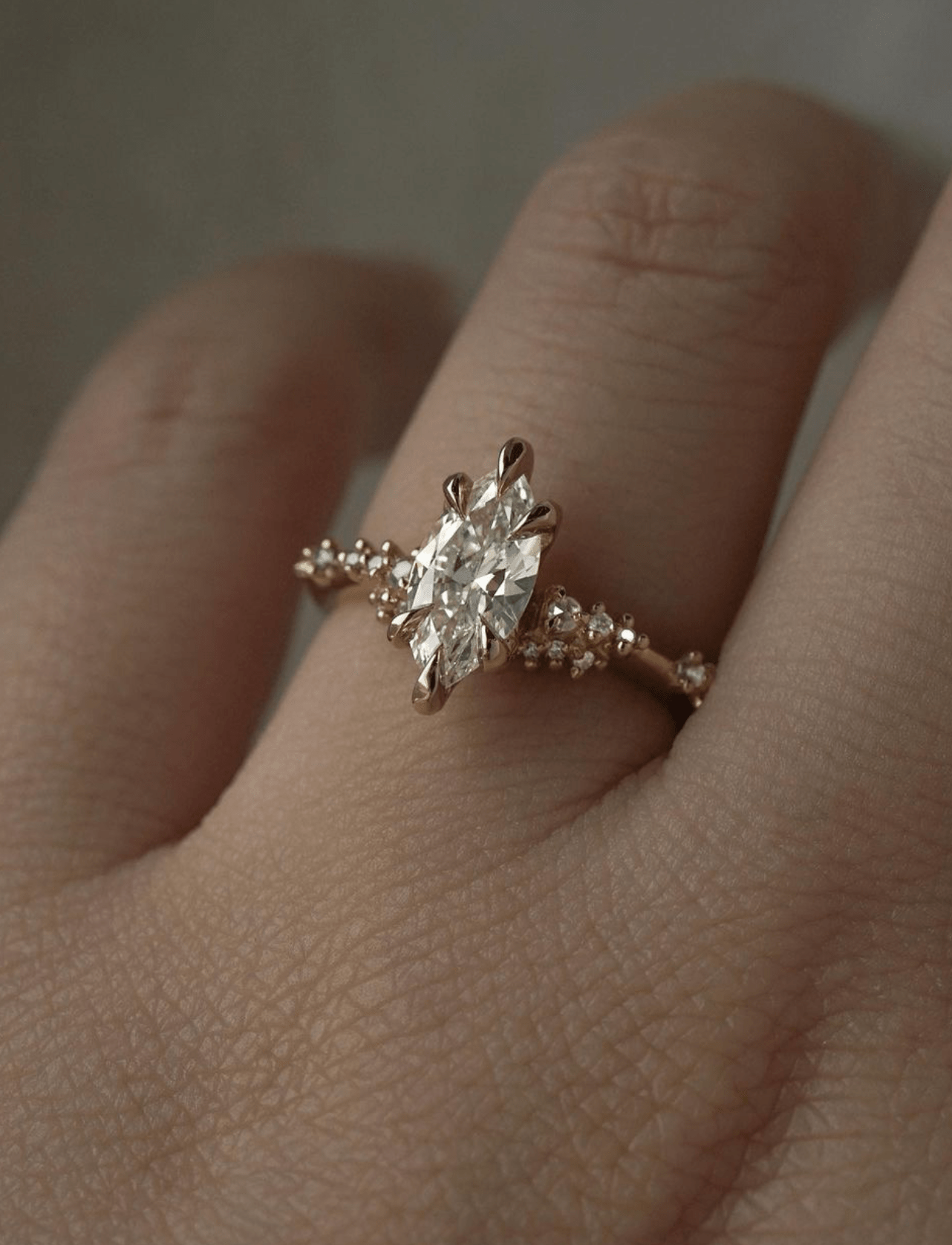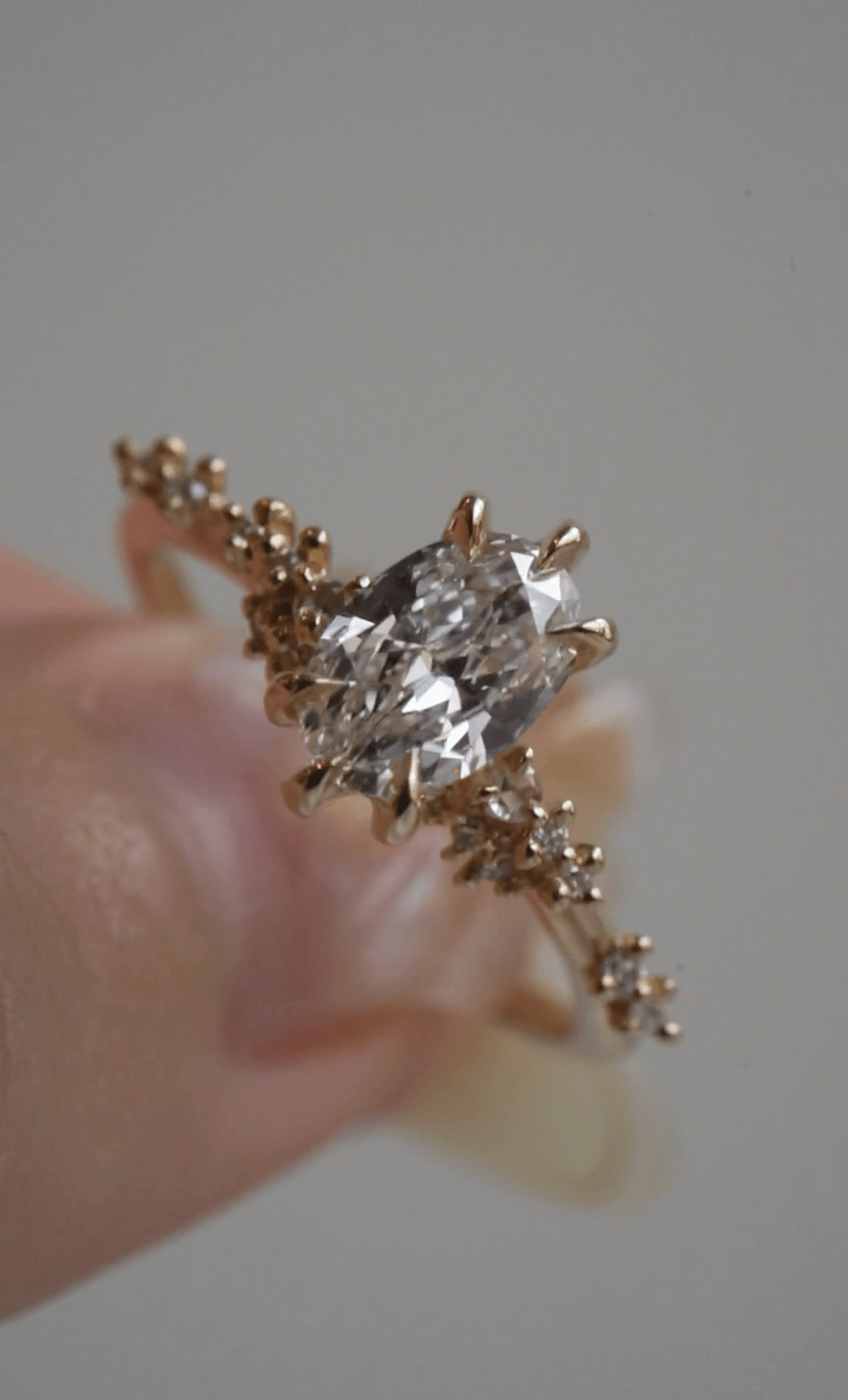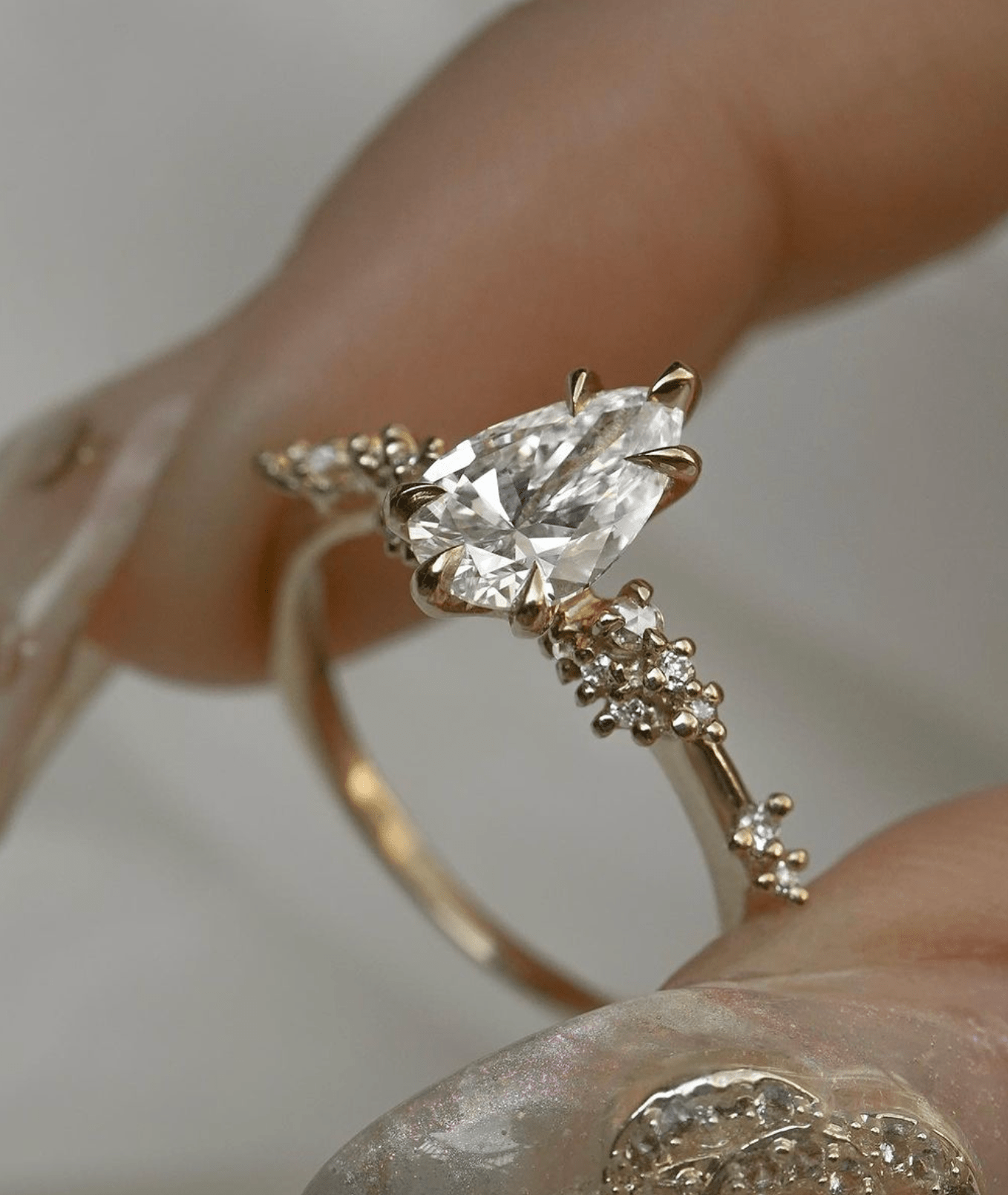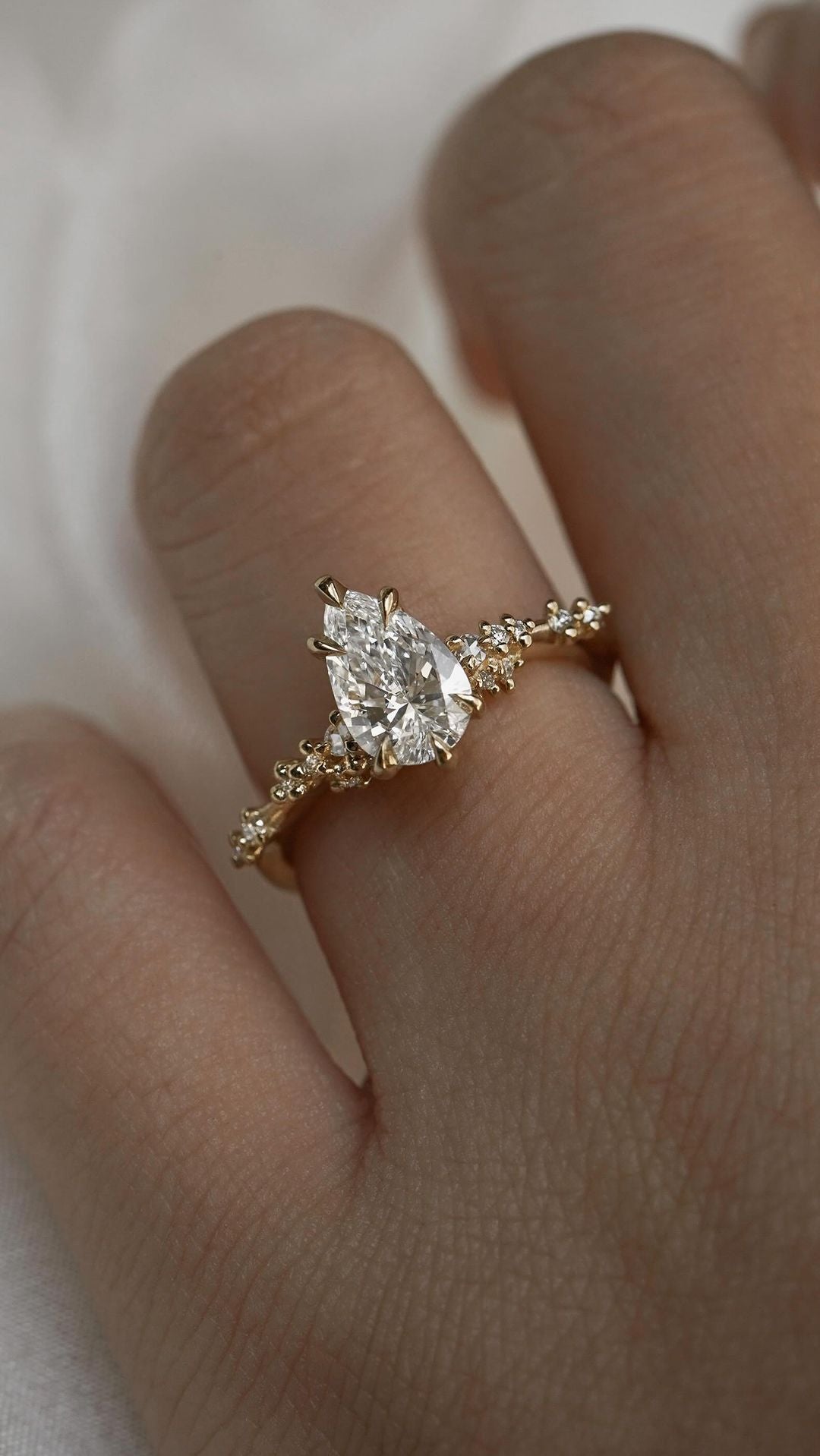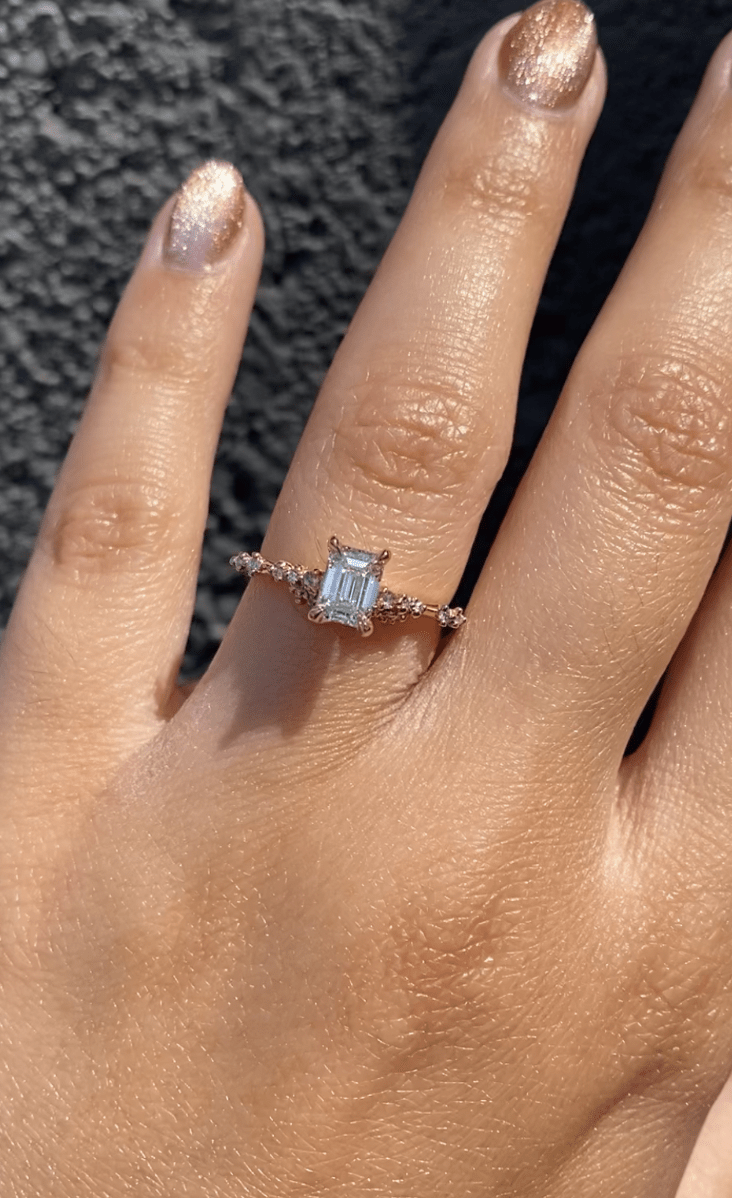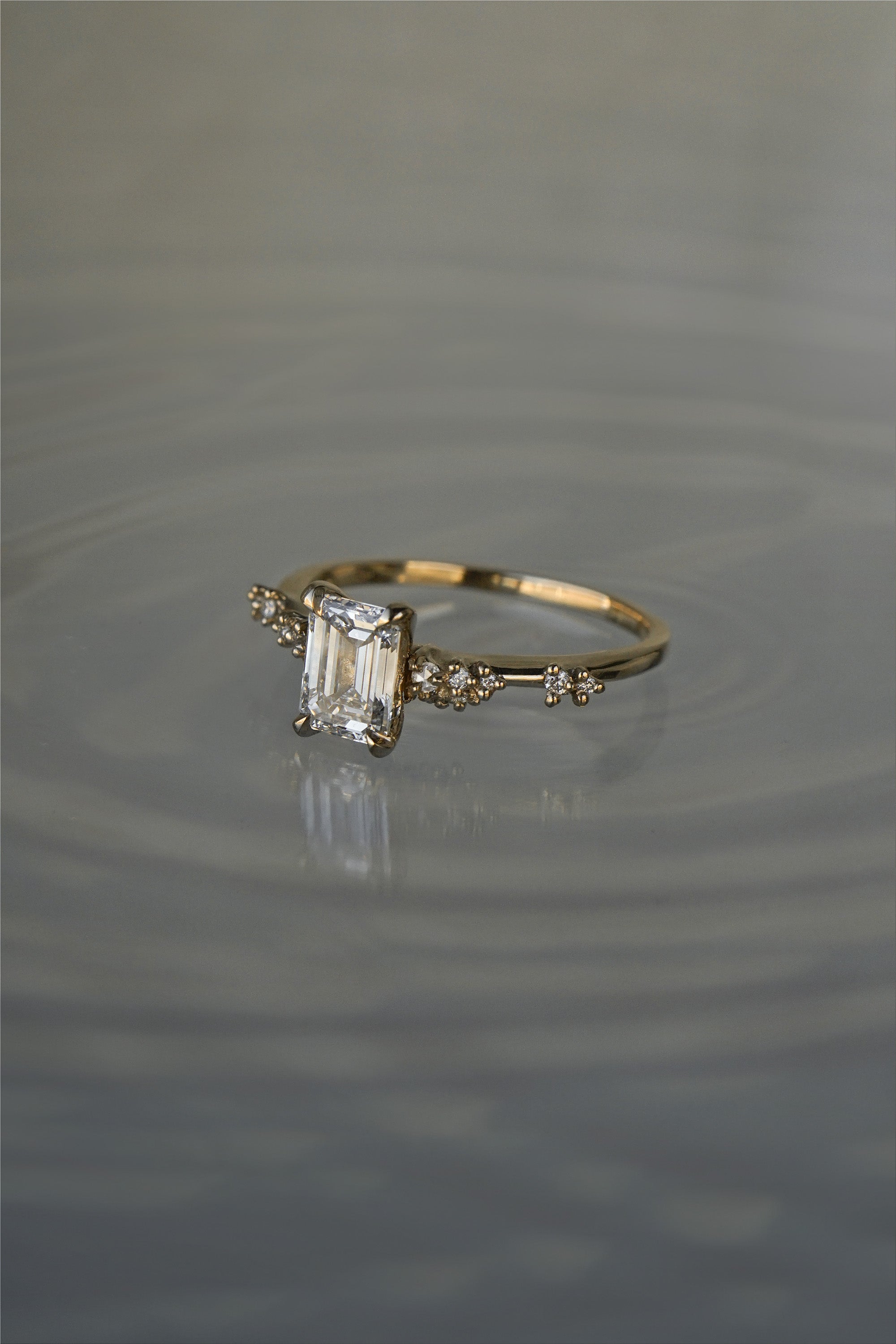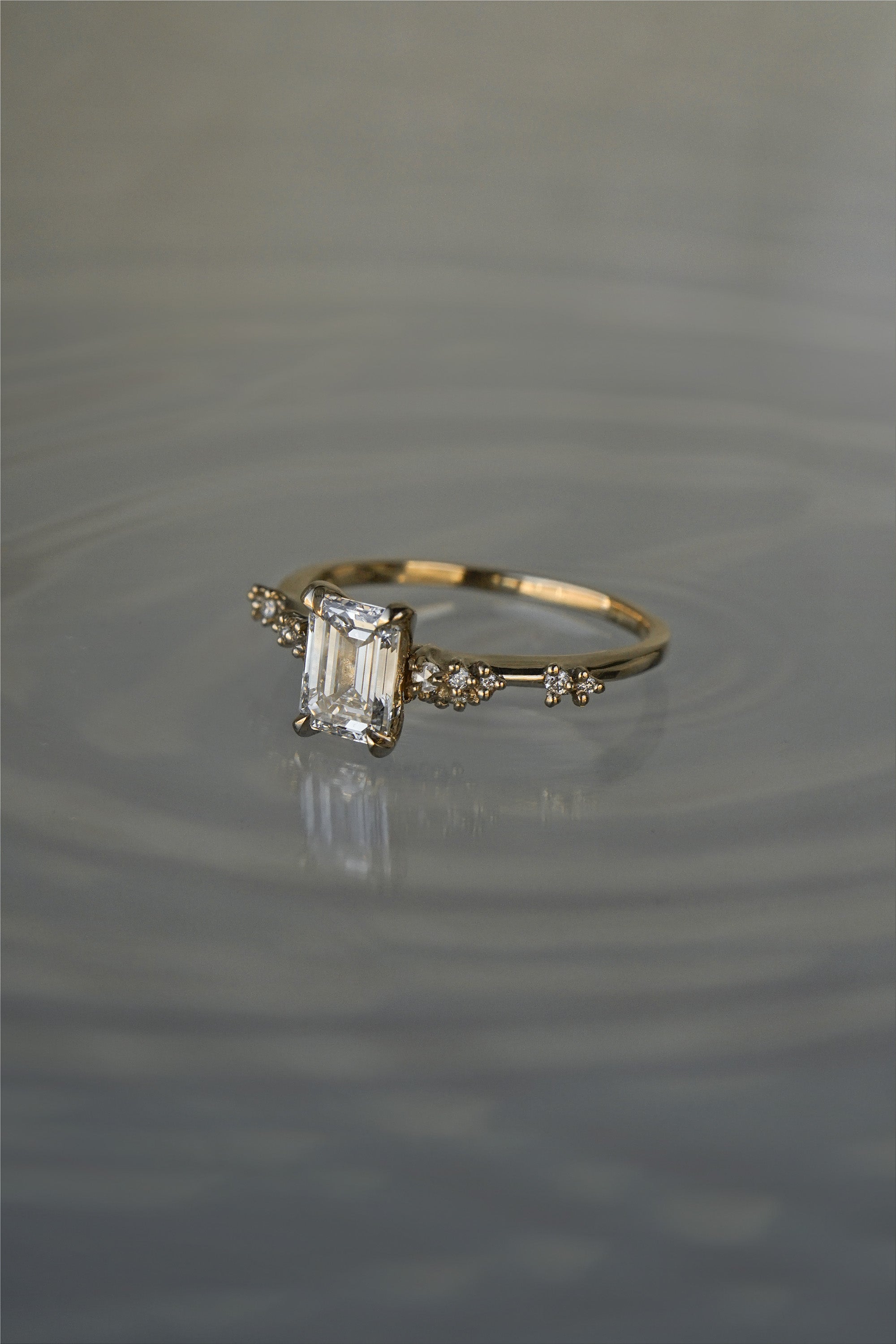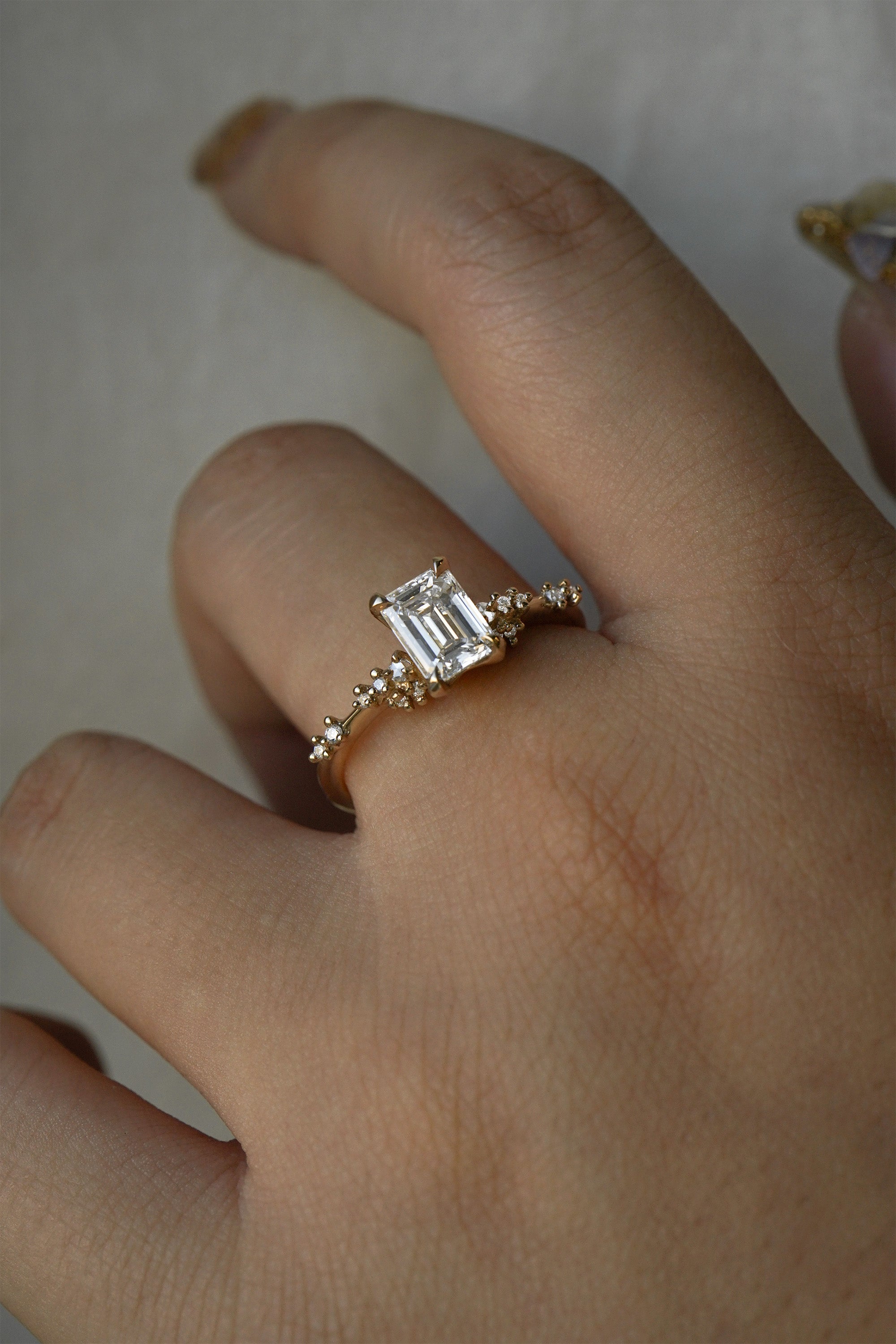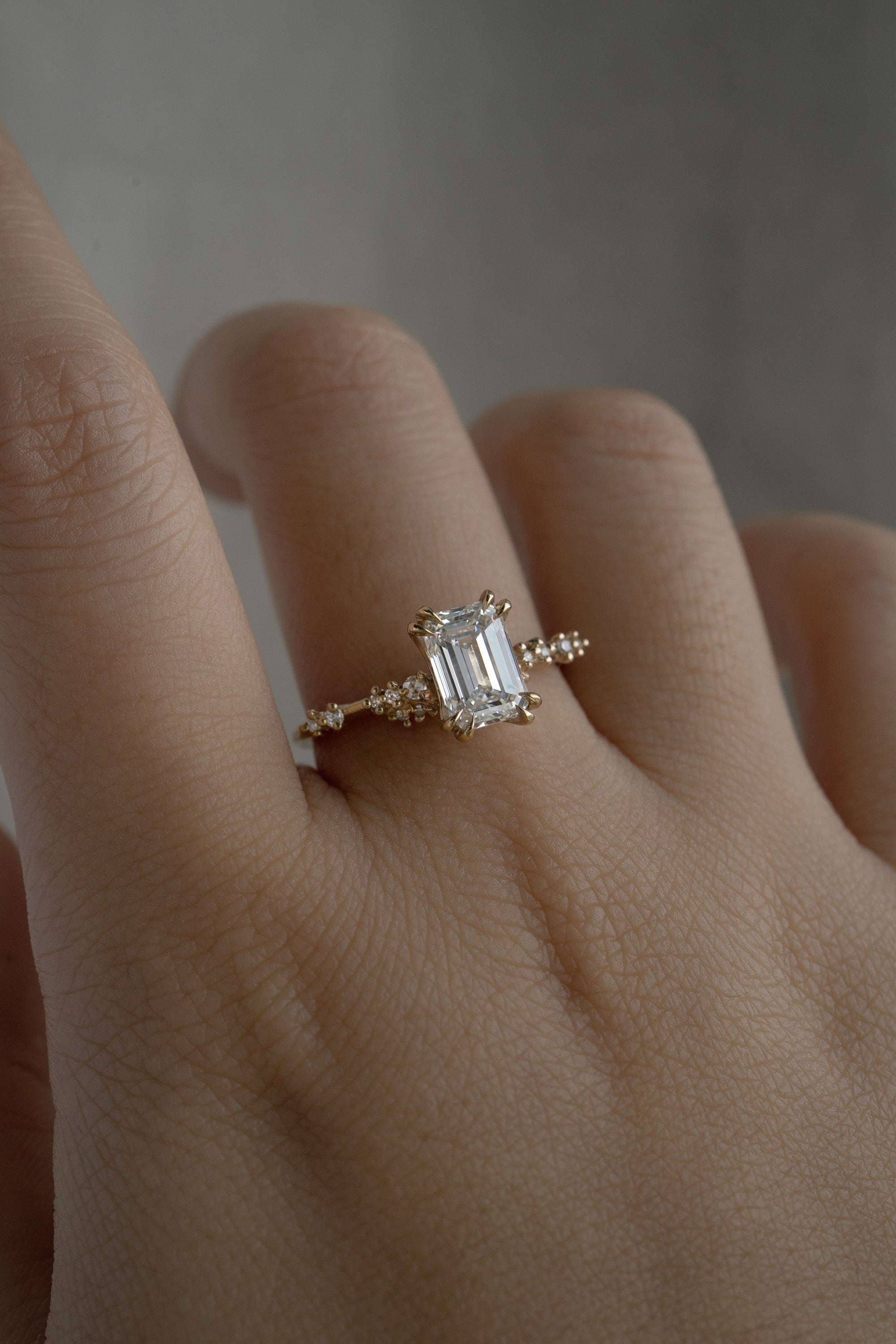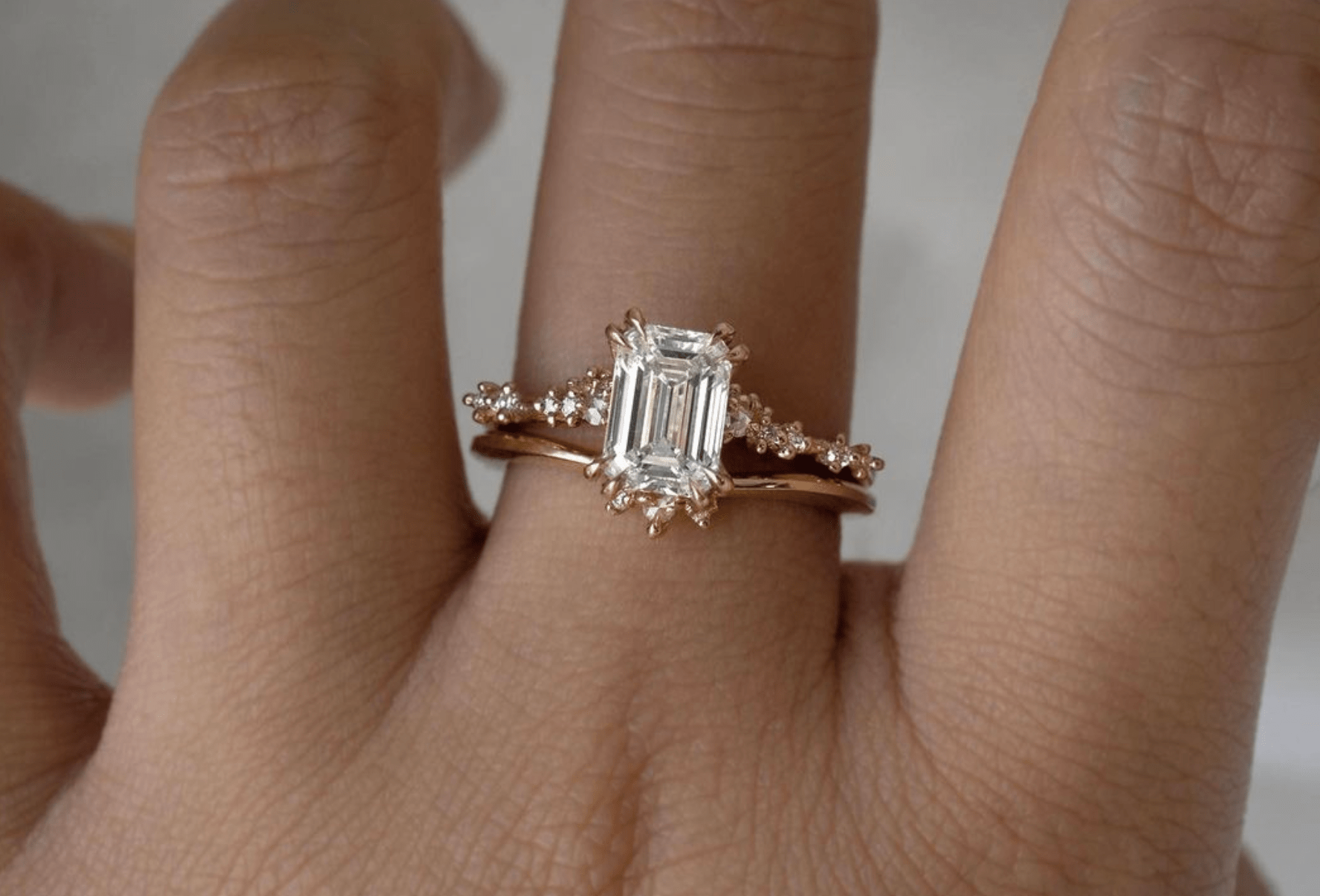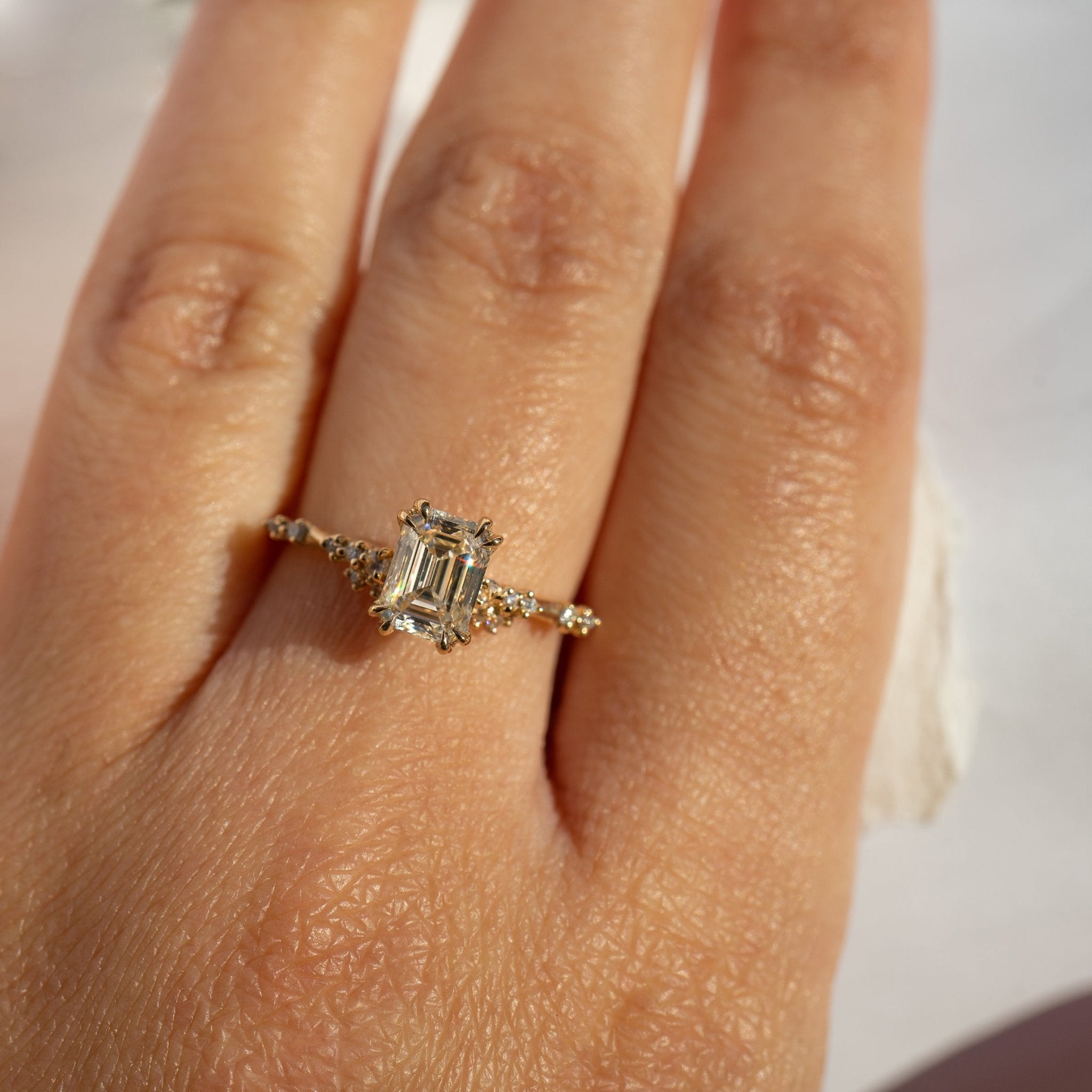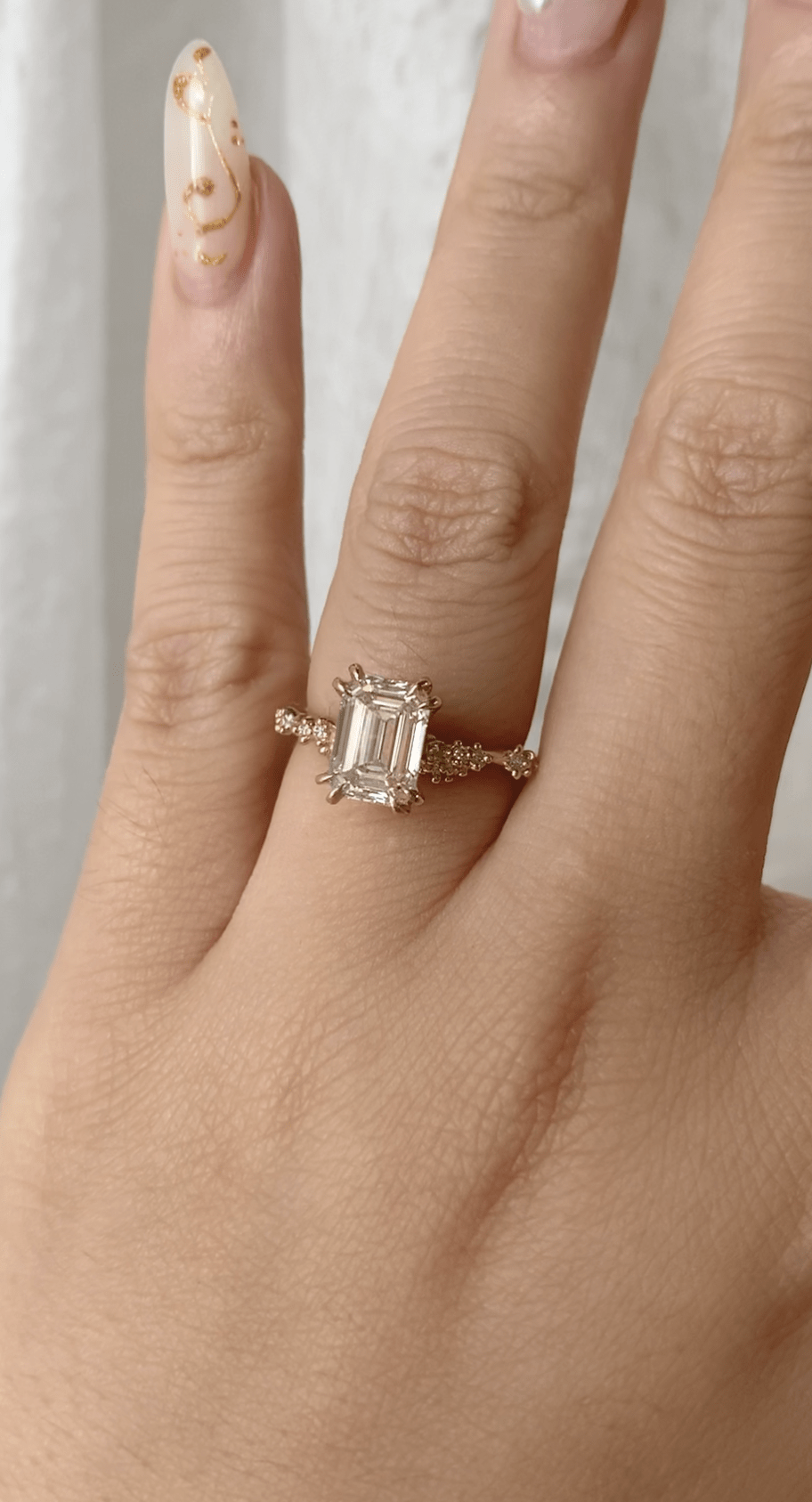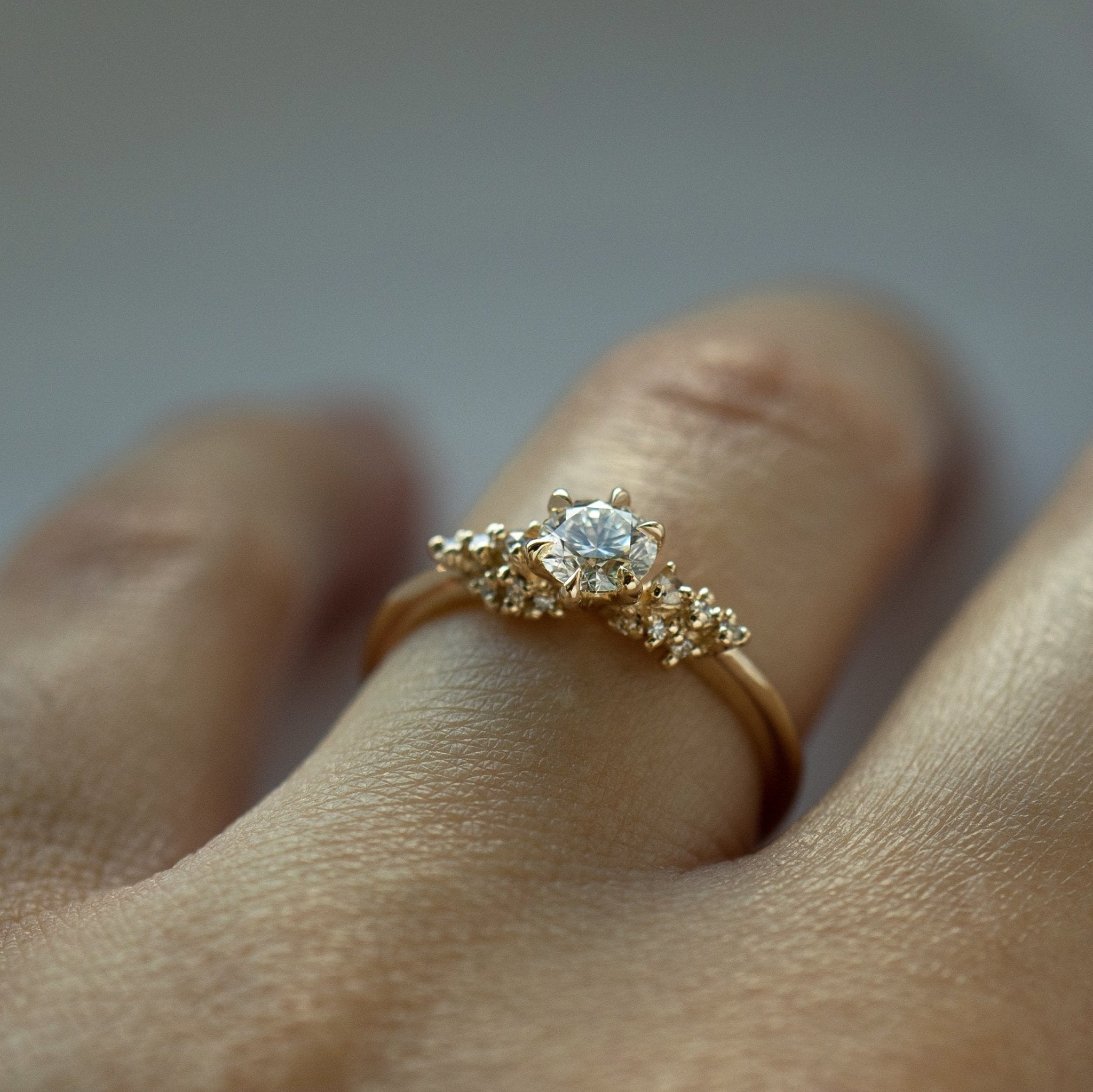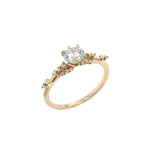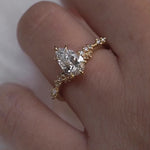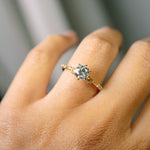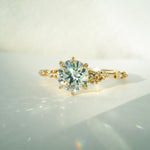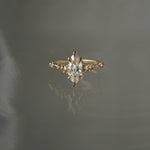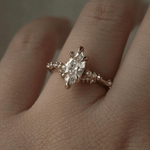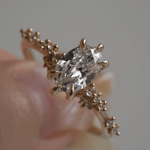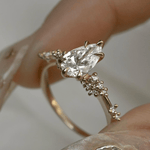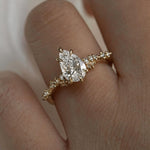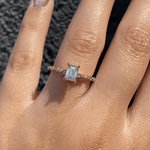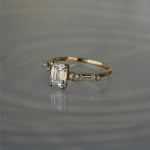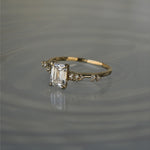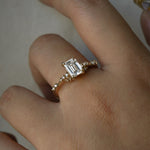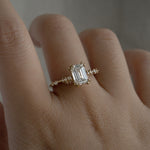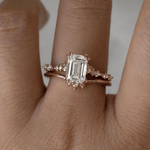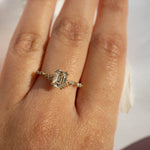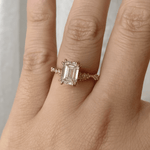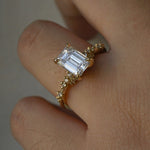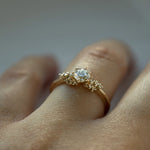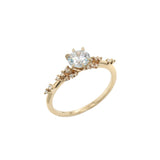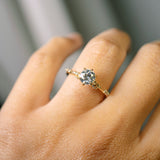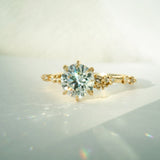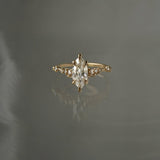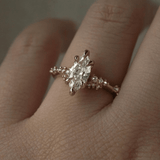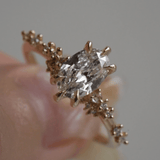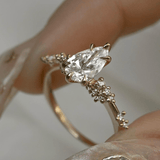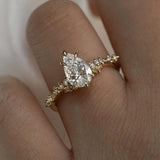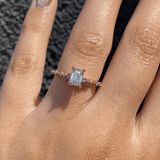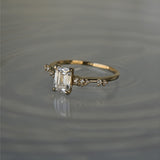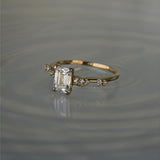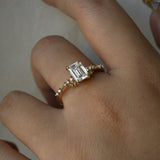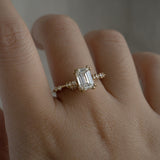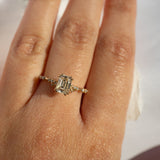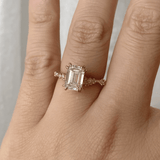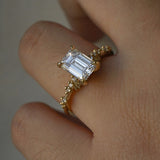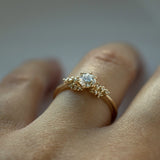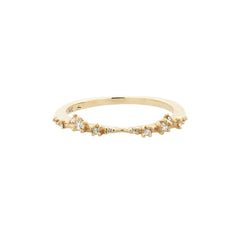Design your lab grown diamond ring
After choosing your band, the most important choices you'll make for your custom lab grown diamond ring are the shape of the centre stone and how many prongs will hold it. Take a look at the examples below!
Diamond Shapes

Round Brilliant

Emerald

Oval

Marquise
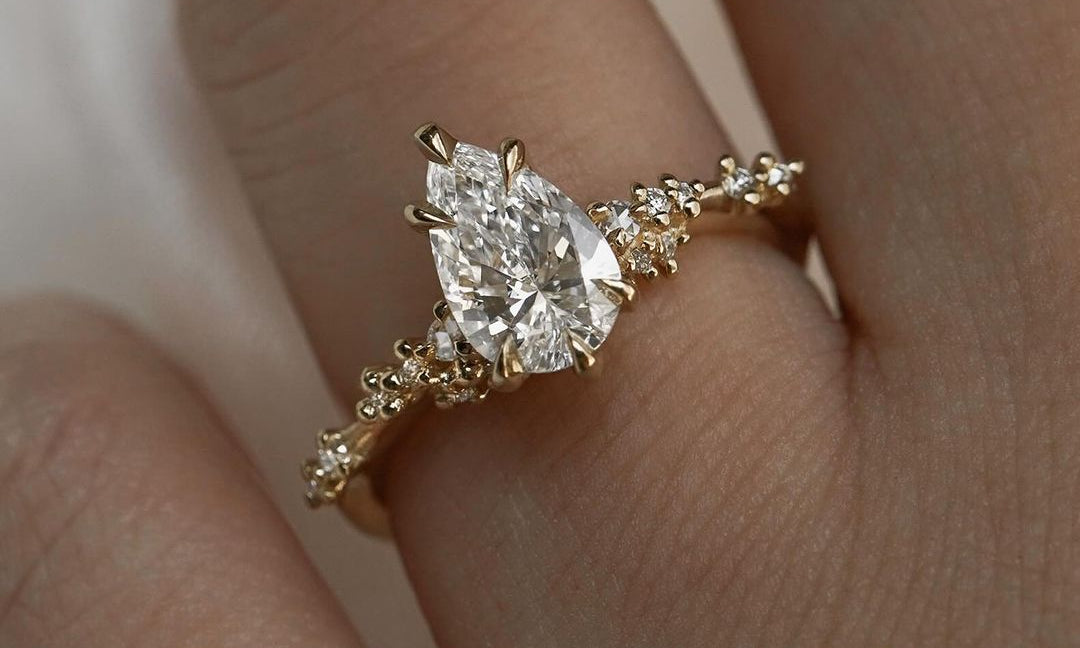
Pear

Cushion
Prongs
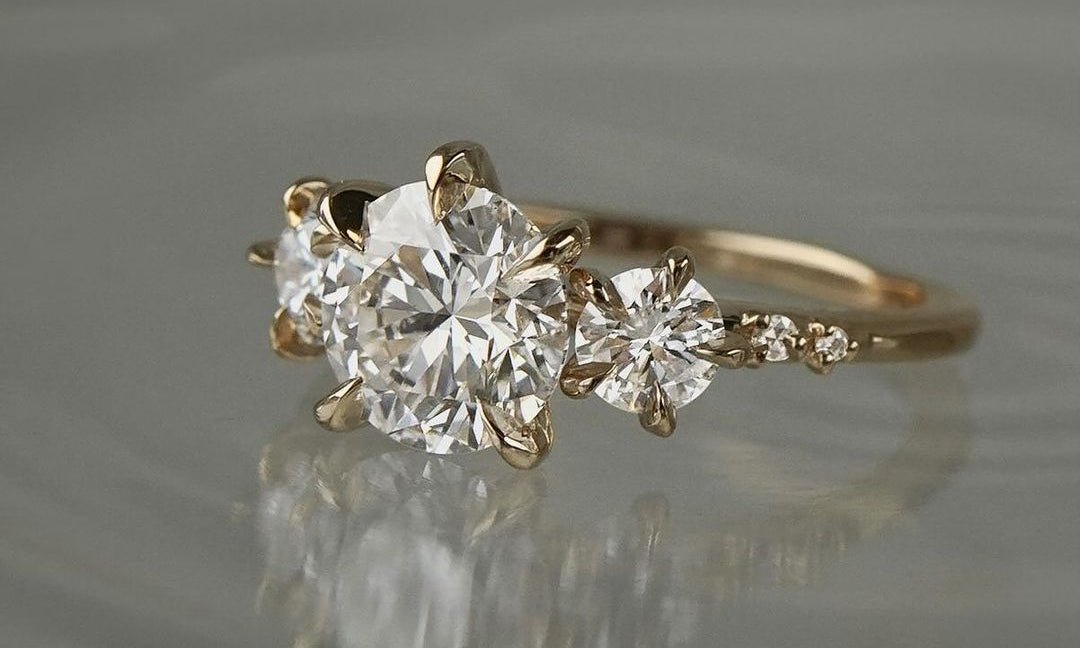
Round - Five Prongs
A key design element of our Wild Iris and Cyndra Supreme rings, our five prong option stands out while holding your round brilliant diamond in elegant security.

Round - Six prongs
Beautifully balanced, your round brilliant diamond will have two subtle groups of three prongs on either side of the band.
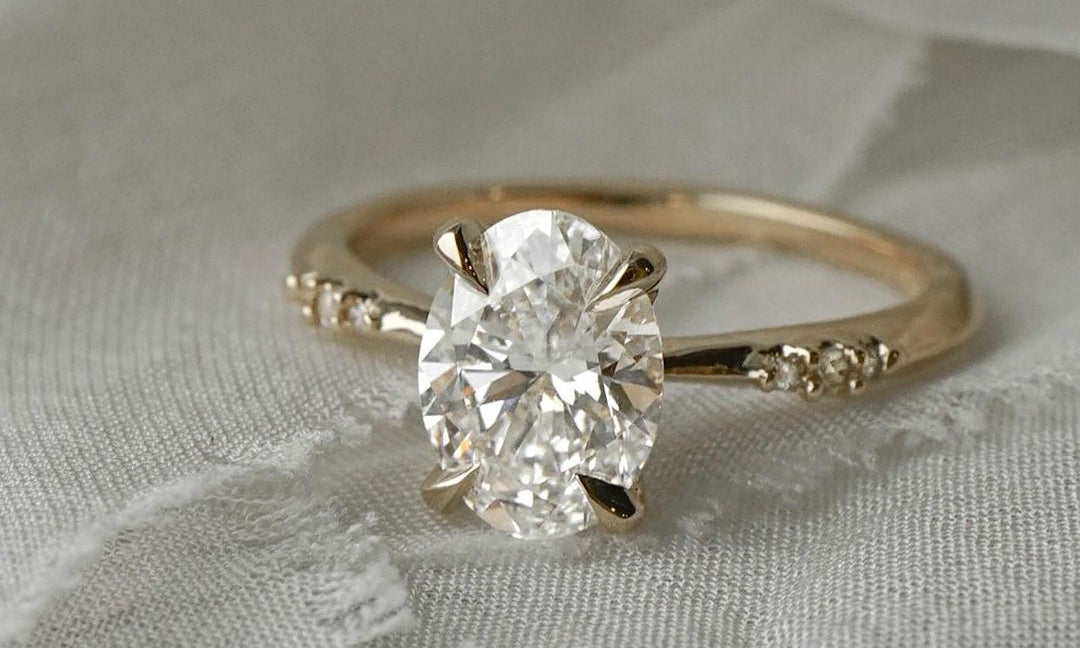
Oval - Four Prongs
An oval shaped diamond held in four prongs strikes a perfect balance between delicacy and security. The prongs at the four corners create a slight visual "squaring" effect, making the stone appear more rectangular.
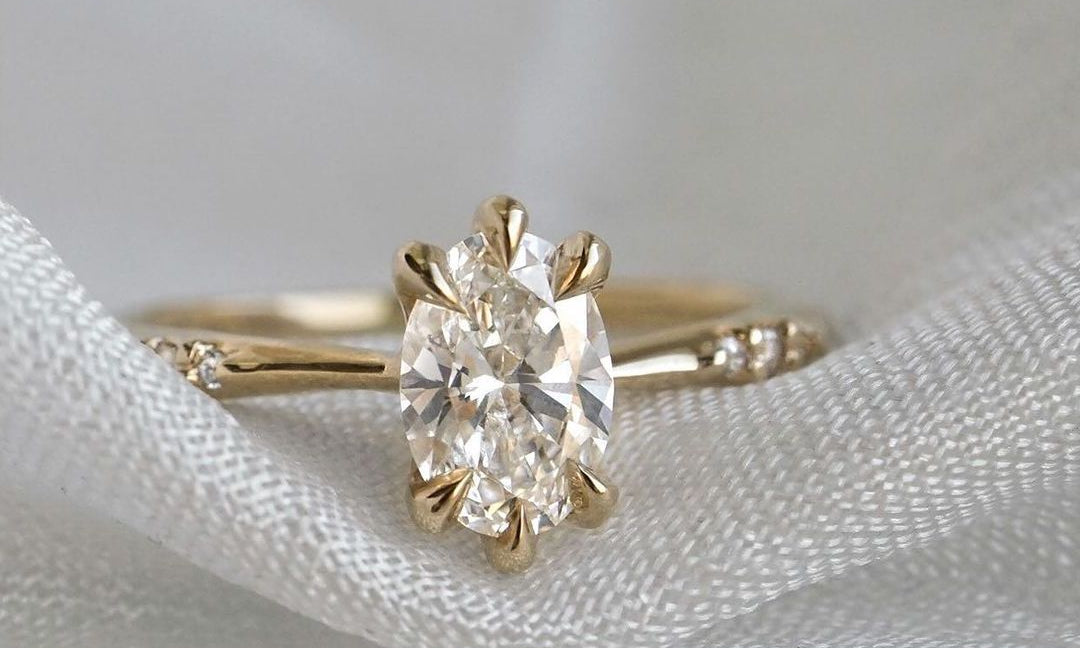
Oval - Six Prongs
Like our six prong option for round diamonds, but elongated; your oval diamond will be cradled between three prongs at either end.

Emerald - Four prongs
Forever a classic, your emerald cut lab grown diamond will be held with a single finely-pointed claw at each corner.

Emerald - Eight Prongs
An LF favourite, with two claw-shaped prongs at each corner of your lab grown emerald cut diamond, uniquely accentuating the stone's shape.
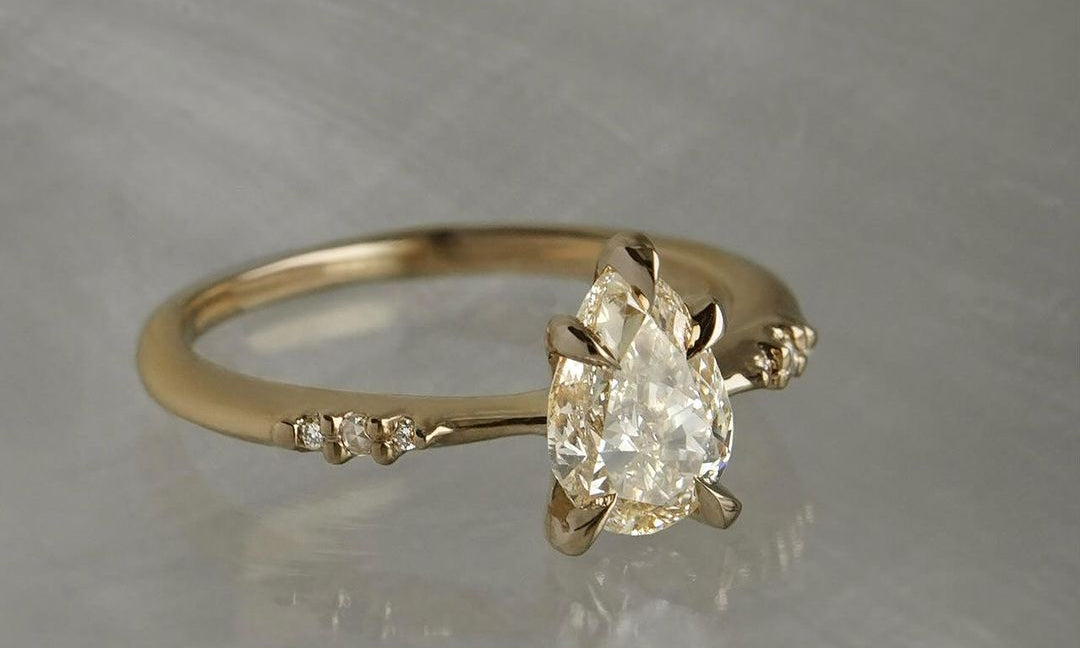
Pear - Five Prongs
With a cluster of three prongs at the pear's pointed tip and two prongs at the pear's rounded base, our five prong option keeps your pear shaped diamond secure. One prong is required on the point of the pear to protect it.

Pear - Six Prongs
Our six prong option for pear cut diamonds has three prongs at the diamond's pointed tip, and three prongs at the diamond's rounded base. One prong is required on the point of the pear to protect it.

Marquise - Six Prongs
Our marquise diamonds are set with six prongs; three at either end. Prongs are required on the points of the marquise to protect them from breakage. Six is the required minimum amount of prongs.
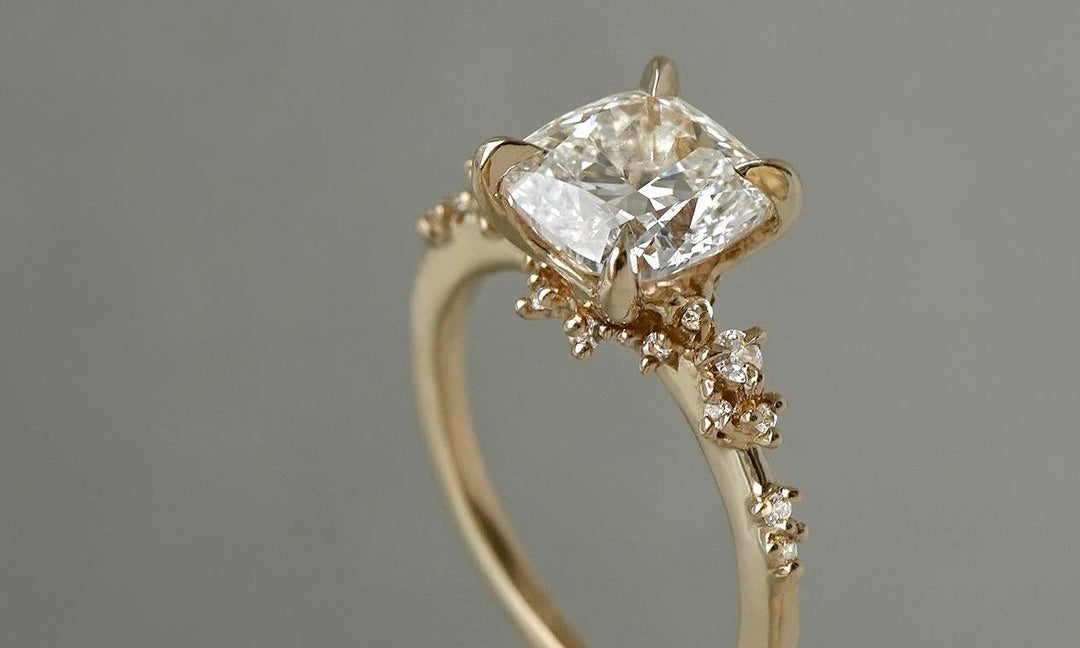
Cushion - Four Prongs
Cushion cut diamonds are set with four prongs, one at each corner, delicately supported and secured.
Looking for more information on lab grown diamonds?
Visit our main lab grown diamond collection page for information about diamond grading and frequently asked questions about our lab grown diamond pieces.

